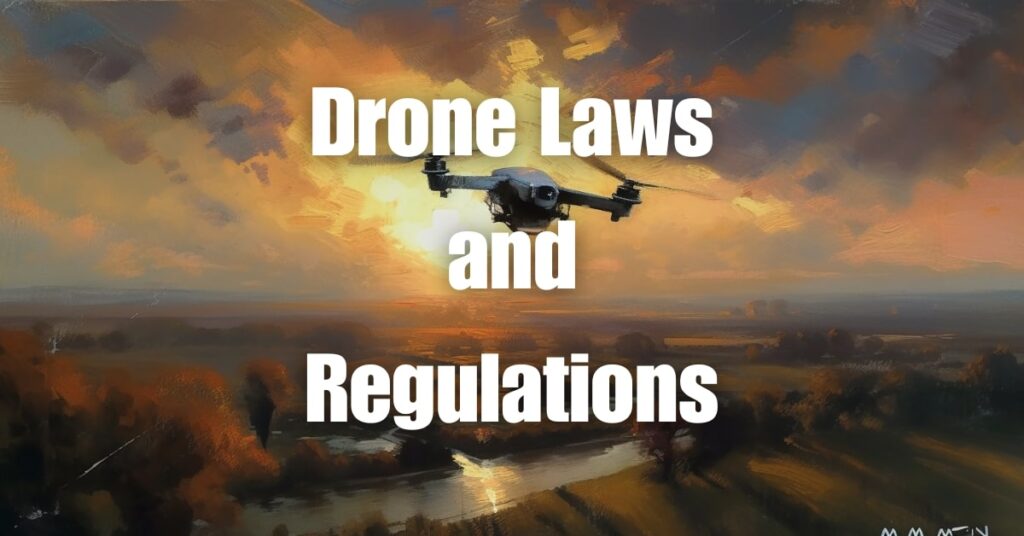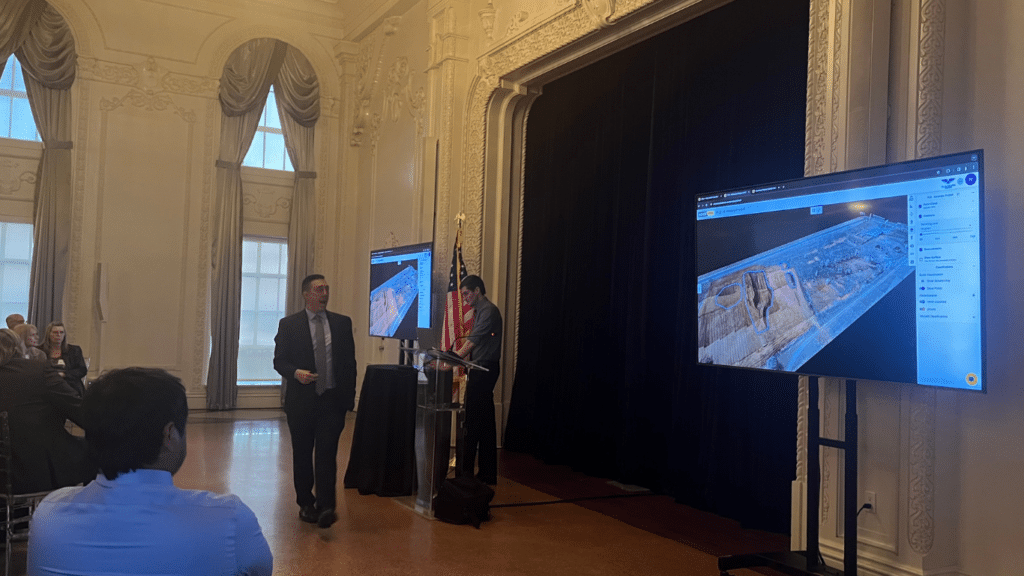Drones have taken the world by storm, revolutionizing various industries and offering exciting new possibilities. However, along with the growing popularity of drones comes the need for clear and concise drone laws and regulations to ensure safety and privacy. In this ultimate guide, we will navigate the complex world of drone laws, answering questions such as “Do I need a license to fly a drone?” and “What are the restrictions for flying a drone near airports?” We will also provide you with the information you need to safely and legally operate your drone.
Why Understanding Drone Laws and Regulations is Crucial
Operating a drone without proper knowledge of the applicable laws and regulations can lead to serious consequences. The primary reasons to understand drone laws and regulations include:
- Safety: Ensuring the safety of both drone operators and the public is a top priority. Adhering to regulations reduces the risk of accidents and collisions.
- Privacy: Drone laws help protect people’s privacy by setting guidelines on where and how drones can be flown.
- Avoiding Legal Issues: Violating drone laws can result in hefty fines, penalties, or even criminal charges. Understanding these laws helps you avoid legal trouble.
- Protecting Your Investment: Drones can be expensive, and losing your drone due to non-compliance with regulations can be a costly mistake.
- Professional Reputation: For commercial drone operators, adhering to the laws and regulations is crucial for maintaining a good reputation and attracting clients.
Overview of Global Drone Laws and Regulations
Drone laws and regulations vary across different countries and regions. In this section, we will briefly discuss some of the major drone laws and regulations in the United States, European Union, Canada, Australia, and Asia.
United States (FAA Drone Regulations)
In the United States, the Federal Aviation Administration (FAA) oversees drone regulations. Key points include:
- Recreational drone users must register their drones if they weigh more than 0.55 lbs (250 grams) and less than 55 lbs (25 kg).
- Commercial drone operators require a Part 107 Remote Pilot Certificate.
- Drones must not fly above 400 feet (120 meters) in controlled airspace without prior authorization.
- Drones must be flown within the visual line of sight of the operator.
European Union
The European Union Aviation Safety Agency (EASA) governs drone regulations within the EU. Some highlights include:
- Drones are categorized into three classes: Open, Specific, and Certified.
- Drone registration is required for drones weighing more than 250 grams or those with a camera.
- Drones must not fly above 400 feet (120 meters) without permission.
- Operators must maintain visual line of sight with their drones.
Canada
Transport Canada regulates drone operations in Canada. Key aspects of Canadian drone laws include:
- Drones must be registered if they weigh between 250 grams and 25 kg.
- Drone pilots require a Pilot Certificate – Basic or Advanced Operations.
- Drones must not fly higher than 400 feet (120 meters) above ground level.
- Drones must maintain a minimum distance of 30 meters (100 feet) from people.
Australia
The Civil Aviation Safety Authority (CASA) oversees drone laws in Australia. Some important points are:
- Drones weighing more than 250 grams require registration.
- Drone operators need an accreditation if flying for recreational purposes or a Remote Pilot Licence (RePL) for commercial purposes.
- Drones must not fly above 120 meters (400 feet) without authorization.
- Drones must maintain a safe distance from people and property.
Asia
Drone laws in Asia vary from country to country. Some general trends include:
- Registration of drones is often required, depending on the weight and purpose of the drone.
- Licensing and certification requirements vary depending on the country and the intended use of the drone.
- Restrictions on flying drones near airports, military installations, and other sensitive areas are common.
- Height and distance restrictions, as well as maintaining a visual line of sight, are frequently enforced.
Licensing and Certification Requirements
Understanding the licensing and certification requirements for drone operation is essential to stay compliant with the law. In this section, we’ll answer the question, “Do I need a license to fly a drone?” and discuss drone laws for hobbyists and commercial use.
Do I Need a License to Fly a Drone?
The requirement for a drone license depends on the country you’re in and the purpose of your drone operation. In general, recreational drone pilots may not need a license, but commercial operators often require certification. Here’s a quick overview:
- United States: Recreational users do not need a license, but commercial operators require a Part 107 Remote Pilot Certificate.
- European Union: No specific license is needed for the Open category, but Specific and Certified categories may require additional certification.
- Canada: Drone pilots require a Pilot Certificate – Basic or Advanced Operations, depending on the type of operation.
- Australia: Recreational drone pilots need an accreditation, while commercial operators require a Remote Pilot Licence (RePL).
Drone Laws for Hobbyists
Drone laws for hobbyists generally focus on registration, weight limits, and operational restrictions. Here are some key points:
- Registration: Many countries require registration for drones weighing over a certain limit, usually around 250 grams.
- Weight Limits: Recreational drones typically have a weight limit, such as 55 lbs (25 kg) in the United States.
- Operational Restrictions: Hobbyist drone pilots must follow rules regarding altitude, distance from people and property, and no-fly zones.
Drone Regulations for Commercial Use
Commercial drone operators often face stricter regulations, such as:
- Licensing: Commercial drone pilots generally need a license or certification, as mentioned above.
- Insurance: Some countries require commercial drone operators to carry liability insurance.
- Operational Restrictions: Commercial drones may be subject to additional restrictions or require permits for specific activities, like aerial photography or agricultural use.
Location-Specific Regulations
Drone regulations can vary based on your location, making it crucial to research local laws. In this section, we’ll cover drone regulations near airports, as well as rules for flying a drone in national parks.
Drone Regulations Near Me
It’s important to research drone regulations specific to your area, as local laws may vary. Some tips for finding location-specific information include:
- Consult the aviation authority website in your country or region.
- Use drone-specific apps, like AirMap or B4UFLY, to find information on local restrictions.
- Join local drone enthusiast groups or forums to learn from other pilots.
Restrictions for Flying Drones Near Airports
Flying drones near airports is generally prohibited or highly restricted due to safety concerns. Here are some general guidelines:
- United States: Drones must not fly within 5 miles (8 km) of an airport without prior authorization.
- European Union: Drones must maintain a safe distance from airports, with specific distances varying by country.
- Canada: Drones must stay at least 5.6 km (3.5 miles) away from airports and 1.9 km (1.2 miles) from heliports.
- Australia: Drones must not fly within 5.5 km (3.4 miles) of a controlled airport.
Rules for Flying a Drone in National Parks
Drone usage in national parks is typically restricted to protect wildlife and maintain a serene environment for visitors. Here are some general rules:
- United States: Drone operation is prohibited in most national parks, with exceptions made for scientific research or other special permits.
- European Union: Rules for flying drones in national parks vary by country, but many parks have strict restrictions or bans.
- Canada:Drone operation is prohibited in national parks without a permit, except in designated areas.
- Australia: Drones are generally not allowed in national parks without a permit, with some parks offering specific drone zones.
Operational Rules and Restrictions
Apart from location-specific rules, drone operation is subject to various operational restrictions that ensure safety and privacy. In this section, we’ll address the question, “Can I fly a drone at night?” and discuss drone laws and regulations for real estate photography, agriculture, delivery services, and flying over private property.
Can I Fly a Drone at Night?
Nighttime drone operation is subject to different regulations depending on the country. Some general guidelines include:
- United States: Part 107-certified drone pilots can apply for a waiver to fly at night. Recreational users must follow local laws and guidelines.
- European Union: Nighttime drone operation is generally allowed in the Open category, but may be subject to additional restrictions.
- Canada: Drone pilots with an Advanced Operations certificate can fly at night, while Basic Operations pilots are restricted to daylight hours.
- Australia: Nighttime drone flights are allowed with proper lighting and within visual line of sight.
Drone Laws and Regulations for Real Estate Photography
Drone usage for real estate photography is subject to specific regulations, such as:
- United States: Commercial drone pilots must hold a Part 107 Remote Pilot Certificate and follow all Part 107 regulations.
- European Union: Drone operation for real estate photography falls under the Specific category and may require additional certification or permits.
- Canada: Commercial drone pilots must hold a Pilot Certificate – Advanced Operations and comply with Canadian drone laws.
- Australia: Drone pilots must have a Remote Pilot Licence (RePL) for commercial real estate photography and adhere to CASA regulations.
Commercial Drone Laws for Agriculture
Agricultural drone usage is governed by various regulations, including:
- United States: Agricultural drone operators must hold a Part 107 Remote Pilot Certificate and follow all Part 107 regulations.
- European Union: Agricultural drone usage typically falls under the Specific category and may require additional certification or permits.
- Canada: Commercial drone pilots must hold a Pilot Certificate – Advanced Operations and comply with Canadian drone laws.
- Australia: Drone pilots must have a Remote Pilot Licence (RePL) for commercial agricultural use and adhere to CASA regulations.
Drone Regulations for Delivery Services
Drone delivery services face unique challenges and regulations, such as:
- United States: Drone delivery operators must comply with Part 107 regulations and obtain additional waivers for beyond visual line of sight (BVLOS) operation.
- European Union: Drone delivery falls under the Certified category and requires additional certification, risk assessments, and permissions.
- Canada: Drone delivery services must obtain a Special Flight Operations Certificate (SFOC) and comply with Transport Canada requirements.
- Australia: Drone delivery services must have a Remote Operator’s Certificate (ReOC) and follow CASA guidelines.
Drone Laws for Flying Over Private Property
Flying drones over private property is subject to varying regulations:
- United States: Drone pilots must respect privacy rights and avoid trespassing, harassment, or other violations.
- European Union: Privacy and property rights vary by country; drone operators should consult local laws and respect individuals’ privacy.
- Canada: Drone pilots must not fly within 30 meters (100 feet) of people and respect privacy rights.
- Australia: Drone operators must maintain a safe distance from people, property, and respect privacy rights.
Penalties for Non-compliance
Violating drone laws can result in severe consequences, including fines, penalties, or even criminal charges. In this section, we’ll discuss the penalties for breaking drone laws.
What are the Penalties for Breaking Drone Laws?
Penalties for breaking drone laws vary depending on the country and the severity of the violation. Some potential consequences include:
- Fines: Fines can range from hundreds to thousands of dollars, depending on the infraction and jurisdiction.
- Confiscation: Authorities may confiscate your drone if you violate drone regulations.
- Criminal Charges: In extreme cases, drone pilots may face criminal charges for violations such as endangering public safety or privacy invasion.
- Loss of License: Professional drone pilots may lose their license or certification if they fail to comply with regulations.
Staying Updated on Drone Laws and Regulations
As drone technology evolves, drone laws and regulations are continually updated to reflect new developments and emerging use cases. In this section, we’ll discuss how to stay informed on the latest drone laws and regulations.
Government and Aviation Authority Websites
Regularly visit the websites of your country’s aviation authority, like the FAA in the United States or EASA in the European Union, to stay informed about the latest updates and changes in drone regulations.
Industry Publications and Newsletters
Subscribe to industry publications, newsletters, or blogs focused on drones and drone regulations. These resources often provide up-to-date information on regulatory changes and new technologies.
Online Forums and Social Media
Join online forums or social media groups dedicated to drone enthusiasts and professionals. These communities often share news, updates, and experiences related to drone laws and regulations.
Local and International Drone Conferences
Attend drone conferences and seminars, either locally or internationally, to learn from industry experts and stay informed about the latest developments in drone laws and regulations.
Tips for Complying with Drone Laws and Regulations
Staying compliant with drone laws and regulations is vital for responsible drone operation. Here are some tips to help you comply with these regulations:
Know Your Local Laws
Research the drone laws and regulations specific to your country, region, and municipality. Ensure you’re familiar with any licensing requirements, operational restrictions, and no-fly zones.
Keep Your Drone in Sight
Maintain visual line of sight with your drone at all times, as this is a common requirement in many jurisdictions. This helps you avoid potential hazards and ensures you’re in control of your drone.
Check for Updates
Regularly check for updates to drone laws and regulations, as they can change frequently. Stay informed by visiting aviation authority websites, subscribing to newsletters, and participating in drone enthusiast communities.
Be Mindful of Privacy and Property Rights
Respect the privacy and property rights of others when flying your drone. Do not fly over private property without permission or capture images that invade people’s privacy.
Use Drone Safety Apps
Utilize drone safety apps like AirMap or B4UFLY to find information on local restrictions, no-fly zones, and other relevant information.
Get Proper Training
If you’re a commercial drone pilot, invest in proper training and certification. This not only helps you comply with regulations but also improves your piloting skills and safety awareness.
The Future of Drone Regulations
As drone technology continues to advance, we can expect regulations to evolve to accommodate new use cases and ensure safety. Here’s a look at some potential future developments in drone regulations:
Beyond Visual Line of Sight (BVLOS)
As drones become more capable and reliable, we may see an increase in regulations that allow for beyond visual line of sight (BVLOS) operations. This could open up new possibilities for drone deliveries, long-range inspections, and more.
Integration with Air Traffic Management Systems
To ensure the safe integration of drones into the airspace, future regulations may require drone operators to participate in air traffic management systems. This could involve real-time tracking and communication between drones, manned aircraft, and air traffic control.
Automated Flight Systems
As autonomous drone technology improves, regulations may need to adapt to accommodate drones that can fly without human intervention. This could involve establishing guidelines for drone AI systems and creating new certification processes.
Expanded Commercial Applications
As new commercial applications for drones emerge, regulations will need to adapt to address these use cases. This could include updates to licensing requirements, operational restrictions, and privacy considerations.
By staying informed and adapting to the evolving landscape of drone laws and regulations, drone operators can ensure safe, responsible, and compliant drone operation in the future.
In conclusion, understanding drone laws and regulations is vital for anyone operating a drone, whether for recreational or commercial purposes. By familiarizing yourself with the applicable laws, staying updated on changes, and following best practices, you can ensure a safe and legal drone operation. To learn more about building and growing your drone business, check out Blue Falcon Aerial’s Comprehensive Guide. If you need any drone services or have further questions regarding drone regulations, don’t hesitate to contact Blue Falcon Aerial for assistance.




